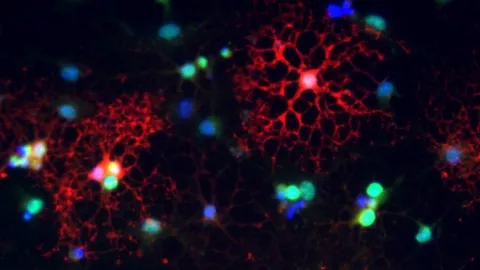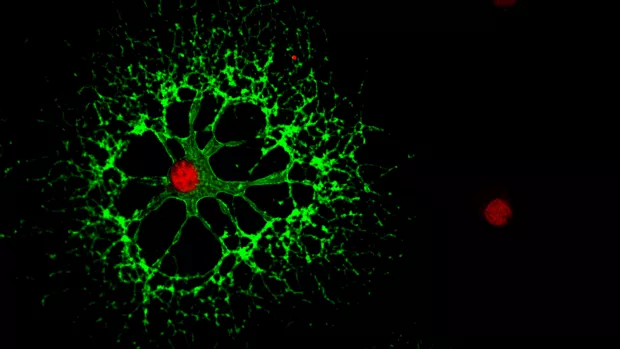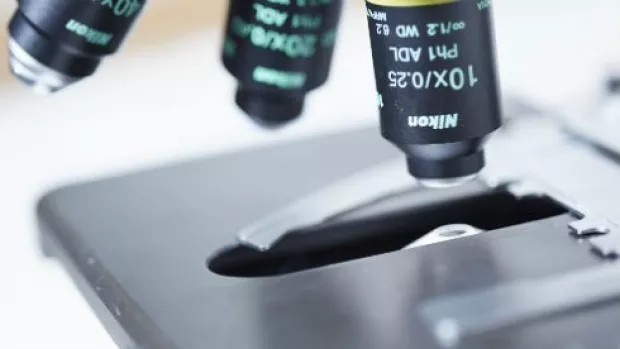
Under the Microscope: Oligodendrocytes
Oligodendrocytes are popping up in all the latest MS research studies. Beth Shorthouse-Ullah, who lives with MS, has been learning the ins and outs of these impressive cells.
Since I was diagnosed with MS three years ago, I've been trying to understand as much as possible about what's actually going on inside my body.
I recently received a crash course on oligodendrocytes – a type of cell that's one of the current stars in the world of MS research. My interviewee was Dr David Coutts, the MS Society’s resident oligodendrocyte expert.
First thing's first, what is an oligodendrocyte?
Oligodendrocytes come from a family of cells called glial cells. Glial cells support nerve cells and help them to function properly. Oligodendrocytes look after nerve cells by producing myelin – the insulating protective coating that surrounds nerve fibres.
Oligodendrocytes look a bit like a bicycle wheel. The main body of the cell is in the centre with lots of 'spokes' that have short lengths of myelin at the ends. Oligodendrocytes can have up to 50 of these spokes, which means they can provide myelin for up to 50 nerve fibres at once.
So oligodendrocytes produce myelin. Why is myelin so important?
Myelin is a bit like the insulation on an electrical wire. It protects the nerve fibre underneath from damage and makes sure the message travelling through the nerve can get to where it's going as fast as possible.
A nerve cell with a myelin coat can conduct its message 100 times faster than one without any myelin!
What happens to oligodendrocytes in MS?
In MS, the body's own immune system thinks the oligodendrocytes are infections and attacks them and their myelin. This means the nerve cells are exposed to damage, and the messages can't get through as efficiently, or may not get through at all. This is what causes the symptoms in MS.
If a single oligodendrocyte is attacked, it could mean that up to 50 nerve fibres may lose myelin.
Can we use oligodendrocytes to find treatments for MS?
Oligodendrocytes are able to repair and replace myelin when it's been damaged or destroyed. The cells that produce new oligodendrocytes recognise where myelin has been lost and travel to the site of the damage. They then develop into the new oligodendrocytes that can begin to make replacement myelin.
In MS, this repair process doesn’t always work properly. We don’t yet know exactly why. It could be that the cells producing the oligodendrocytes have to work too hard to repair all the damage. Or something else – like ageing - prevents new oligodendrocytes from being produced.
So scientists are now focusing on this process to design treatments to help repair lost myelin.
What does the latest oligodendrocyte research tell us?
One promising new area of research is how a skin cancer drug called bexarotene could be used to promote myelin repair. Studies in the lab have shown bexarotene targets a special part of the oligodendrocyte (a molecule called RXR-gamma) to help oligodendrocytes produce new myelin more efficiently.
Read about the results of the bexarotene trial
Lots of scientists are looking at other aspects of oligodendrocyte research too, like the impact of ageing and lifestyle factors (such as diet and exercise) on myelin repair.
The potential for myelin repair treatments is really exciting, especially for people with progressive MS, for whom there are very few treatments available. I’m really looking forward to seeing what happens next!
Read about the first person to join our myelin repair trial in 2022
This blog first appeared in Research Matters magazine in 2020.



